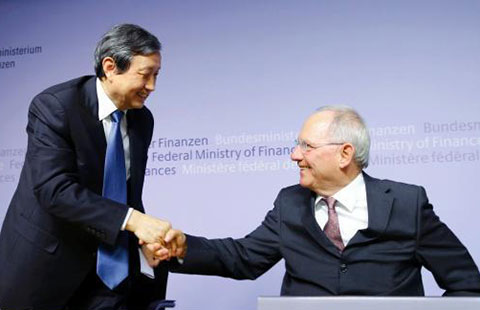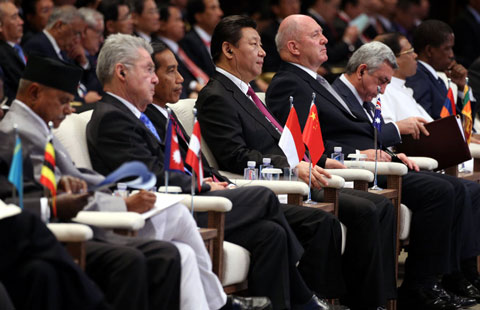Renminbi may follow own script in internationalization
By NIV HORESH (China Daily) Updated: 2015-03-09 07:57There is no reason to assume China's currency will take the same path as others as it goes global
 |
|
ZHANG CHENGLIANG/CHINA DAILY |
In October, the UK government became the first in the Western world to issue a sovereign bond in China's currency, the renminbi. The 3 billion yuan bond ($477 million), which will be used to finance Britain's reserves, marked a significant moment in China's efforts to internationalize the renminbi and cement its position as a future reserve currency, alongside the US dollar, euro, pound sterling, Japanese yen, Swiss franc and Canadian dollar.
It reignited the debate over whether the renminbi can eventually supplant the US dollar as the leading global reserve currency. Some analysts are forecasting a gradual transformation of the renminbi into the world's next principal reserve currency. Others contend that China's financial markets will need to undergo dramatic changes for any such power shift in the foreseeable future.
To reach a reasoned conclusion it is vital to avoid falling into the trap, as many do, of solely weighing the arguments through the twin prism of economics and politics, while ignoring the valuable lessons that history teaches us.
History reminds us that the prospect of Chinese currency used as international currency may not be entirely new. For even though traditionally cast Chinese copper coinage was swept aside by Western steampowered minting technology in the late 19th century, it had, for a millennium or so before that, set the benchmark for East and Southeast Asian monetization.
In fact Chinese currency-in the form of pre-modern copper coinage-reached the apex of its global presence around the 14th century. By this time it had been circulating widely in Japan, Korea, Vietnam and along the coastal trading hubs of Cambodia, Thailand and Myanmar. It was also present in Indonesia, the Philippines, Borneo and parts of India and Sri Lanka. China's copper coinage served as a model for the first indigenous currencies of Japan and Korea.
So it can be argued that China's currency has a track record as a reserve currency. It also meets many of the key requisites that an aspirant international reserve currency must satisfy: China has a large economy; it has significant geopolitical clout; it has low inflation and low exchange rate volatility. Where it has a long way to travel is in opening up its domestic capital markets to overseas investors. Progress has been deliberately gradual. Foreign investors can access China's capital markets through schemes such as the Qualified Foreign Institutional Investor program. It has increased the flexibility of the exchange rate by widening the renminbi trading band.
As the decision by the UK government to issue the renminbi sovereign bond demonstrates, the renminbi has become an integral part of the international monetary system. Around a year ago, the renminbi temporarily overtook the euro to become, for about a month, the second most used currency in letter-of-credit trade finance after the US dollar, according to the Society for Worldwide Interbank Financial Telecommunication.
- Israel requests to join Asian Infrastructure Investment Bank
- Chinese stocks rebound on April 1
- China, the West in Africa: more room for cooperation than competition
- Nanjing cuts taxi franchise fees
- Air China increases flights to Milan, Paris
- JD.com raises delivery charges
- Veteran corporate strategist upbeat about China economy
- L'Oreal China sales revenue up 7.7% in 2014

















